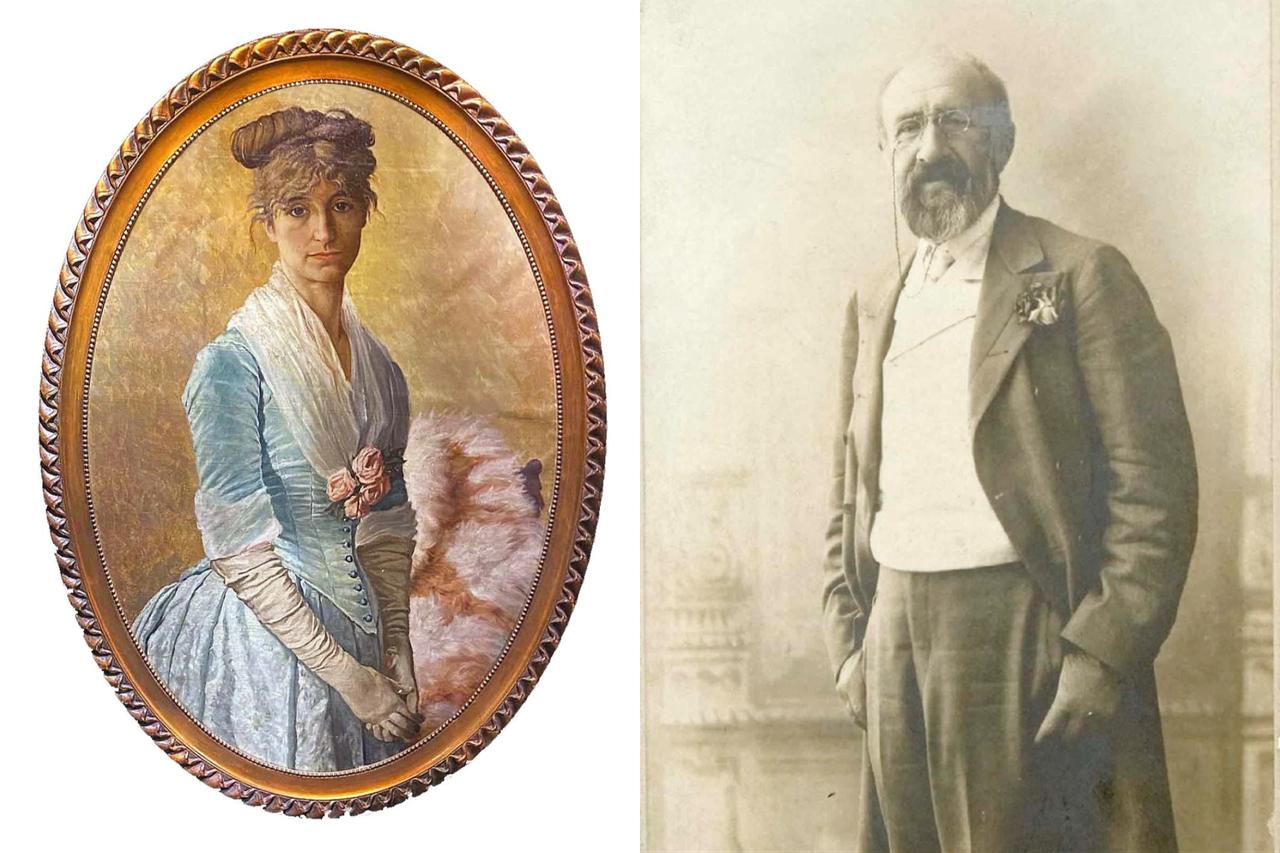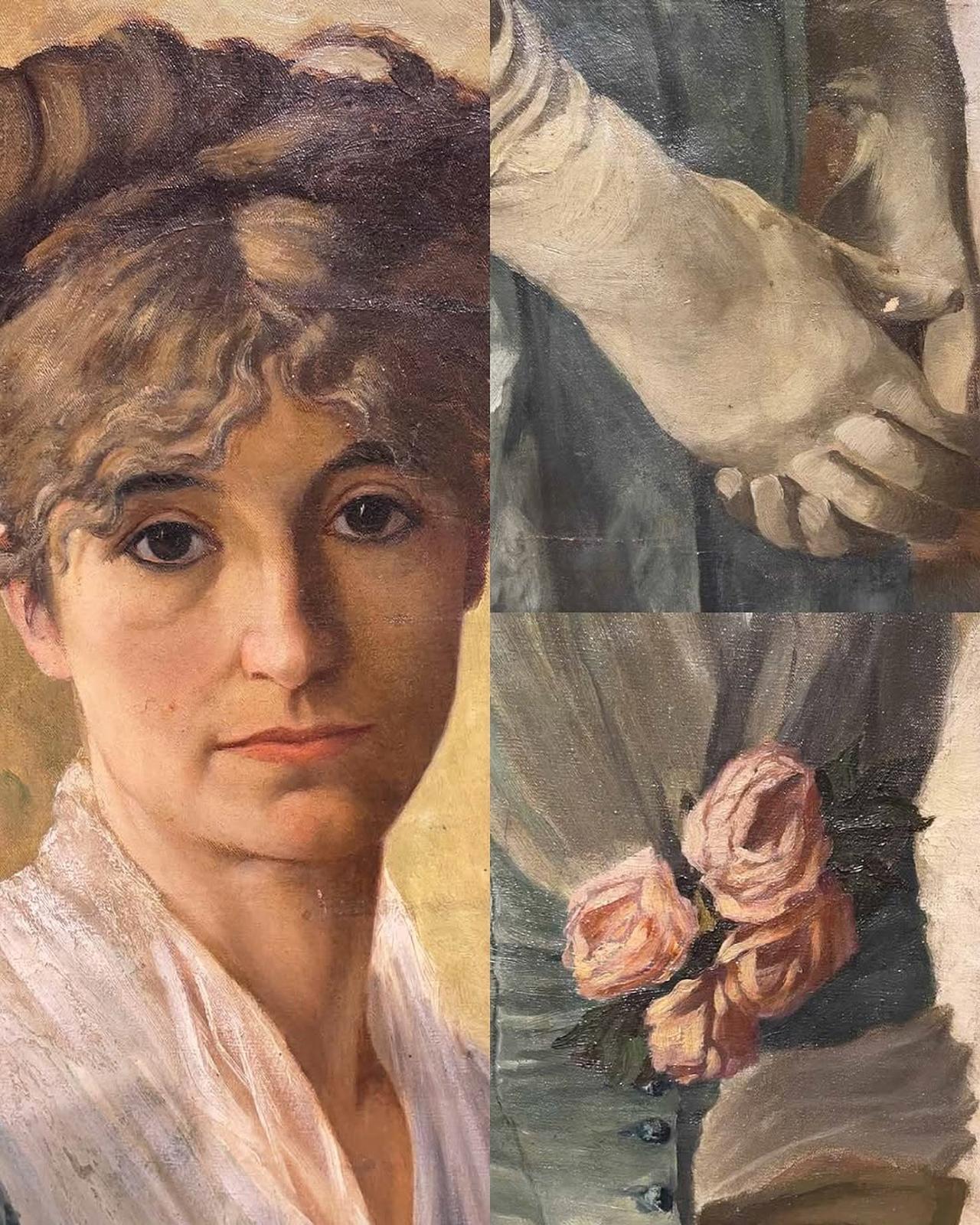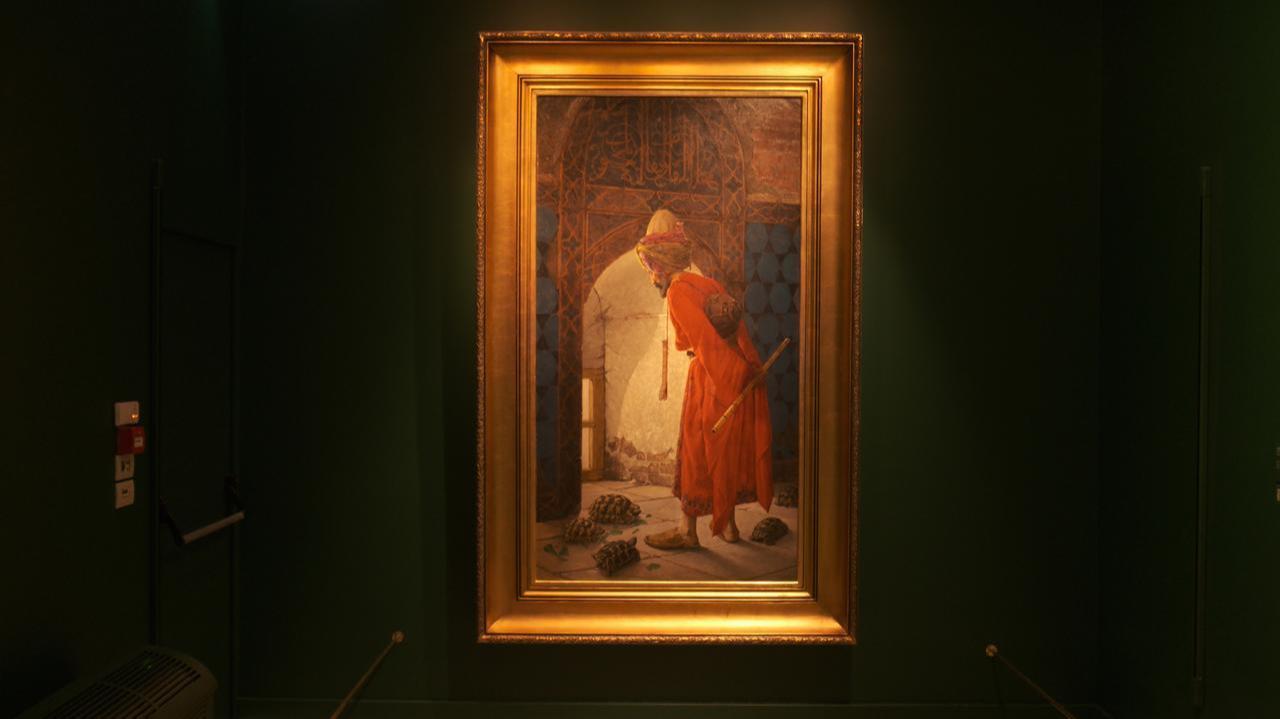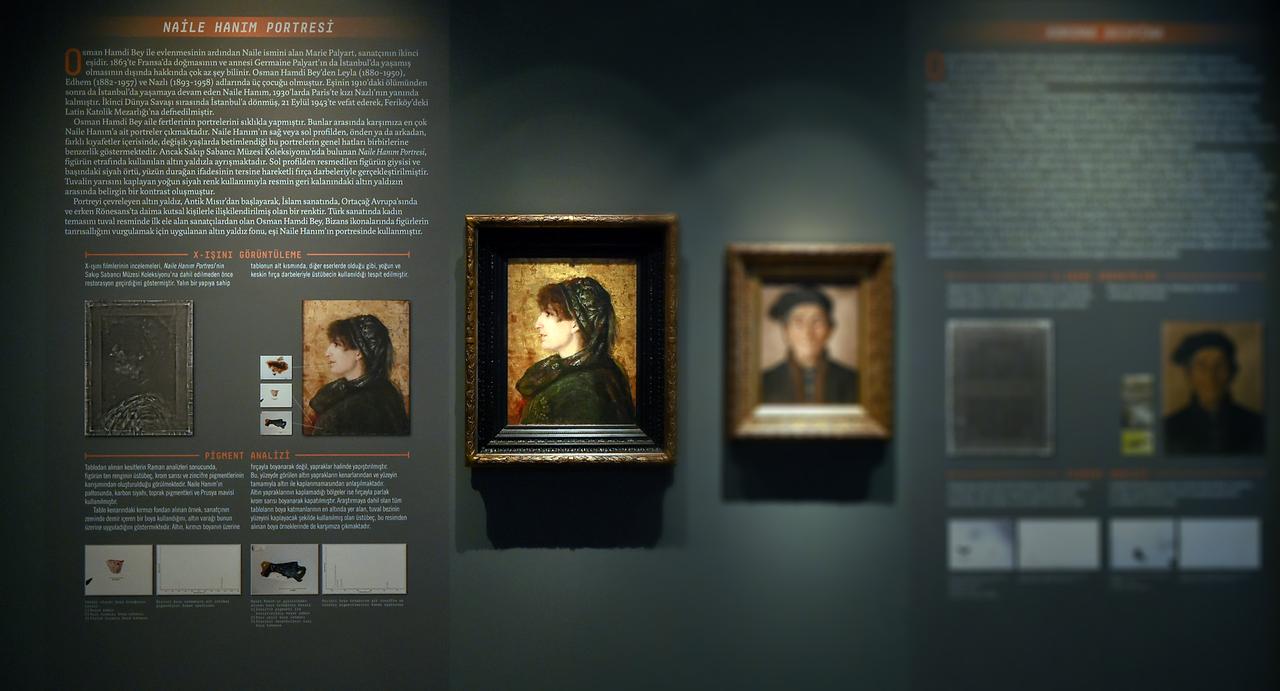
A portrait of Naile Hanim, the French-born wife of Ottoman painter, archaeologist, and museum founder Osman Hamdi Bey, has been released for private sale in Istanbul with a price tag of $1.5 million.
The painting, known as "The Portrait of Naile Hanim" (Naile Hanim Portresi), is offered by Portakal Art, Culture and Auction House, under the direction of renowned auctioneer Maya Portakal Bitargil.
The word "hanim" is an Ottoman Turkish honorific meaning “lady,” while "bey" was a title of respect used for men of education or social standing, similar to “gentleman” or “sir.”
It has been reported that it will not go to auction but will be sold on a fixed-price basis, meaning that the first buyer to pay the listed amount will acquire the work.
Art historian Professor Edhem Eldem prepared an expert report for the portrait, which was painted in the 1880s and kept within the family for generations. The piece has already drawn attention for its rarity and for what it represents in the history of Ottoman art.

The portrait stands apart from Osman Hamdi Bey’s better-known Orientalist compositions for its restraint and modern approach.
Professor Eldem describes a Western-style composition, painted entirely without the “Sark” motifs such as tiles, carpets, or arches that often defined Ottoman-era Orientalist works, as reported by Milliyet.
The sitter is depicted front-facing, dressed in soft pastel tones, long gloves, and a structured gown reminiscent of late-nineteenth-century European salon portraiture. The artist’s decision to focus on poise and personality rather than setting suggests a shift from the decorative to the psychological.
Turkish coverage describes the work as a revolutionary portrayal for its time, one that presented a woman not as an object of beauty but as an individual subject. In a society where female visibility was limited, Hamdi’s portrayal of Naile as thoughtful and self-contained was an act of both artistic and cultural defiance.
The version now on sale differs from another, smaller "The Portrait of Naile Hanim" held by the Sakip Sabanci Museum in Istanbul. That painting shows the sitter in profile against a gold-leaf background and was acquired at auction in 2009.
According to museum research, the use of gold evokes Byzantine iconography, reflecting the artist’s admiration for his wife.
The canvas currently offered through Portakal Private Sales, by contrast, displays a frontal gaze and modern Western atmosphere.

Born in Istanbul in 1842, Osman Hamdi Bey became one of the Ottoman Empire’s most influential cultural reformers.
After studying in Paris under Jean-Leon Gerome and Gustave Boulanger, he brought academic painting techniques to Istanbul and established the foundations of modern Turkish art.
Beyond painting, he served as the director of the Imperial Museum (Muze-i Humayun) for nearly three decades and founded the Sanayi-i Nefise Mektebi, today’s Mimar Sinan Fine Arts University, the first institution of its kind in the empire.
He is widely celebrated for "The Tortoise Trainer" (1906), an allegorical work often interpreted as a reflection on reform and patience.
Hamdi’s wife, Naile Hanim, was born Marie Palyart in France around 1862. After marrying Hamdi, she took the name Naile and lived in Istanbul for the rest of her life. The couple had three children—Leyla, Edhem, and Nazli—and their home became a center of intellectual life and artistic experimentation.
Hamdi painted Naile many times over the years, showing her in different ages and poses. In these portraits, she is not passive but self-aware, mirroring the modernizing ideals that Hamdi sought to express through art.
Naile lived until 1943, decades after her husband’s death, leaving behind an image that endures in both private and institutional collections.

"The Portrait of Naile Hanim" captures a crucial moment in Ottoman art when personal intimacy intersected with broader questions of cultural identity.
By portraying his wife as an intellectual subject, Hamdi advanced a vision of female individuality that paralleled the modernization of Ottoman society in the late nineteenth century.
His art marked a break from Orientalist depictions of anonymous women and instead introduced portraits rooted in introspection, education, and dignity. Naile Hanim became both the muse and embodiment of a new social ideal, representing the Ottoman woman as poised, literate, and modern.
The painting’s reemergence on the market more than a century later extends that transformation into the present. If sold for its $1.5 million asking price, it would stand among the highest-valued Ottoman portraits in Türkiye.